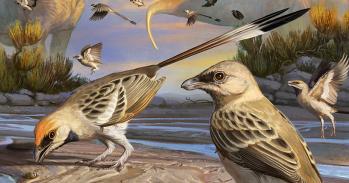
Scientists have uncovered a vital link in the chain of events that gives stem cells their remarkable properties.
Scientists have uncovered a vital link in the chain of events that gives stem cells their remarkable properties.
Exactly how pluripotency comes about is a mystery. If we want to create efficient, safe and reliable ways of generating these cells for medical applications, we need to understand the process; our research provides additional clues as to how it occurs.
Dr Jose Silva
Researchers from the Wellcome Trust Centre for Stem Cell Research at the University of Cambridge have pinpointed the final step in a complex process that gives embryonic stem cells their unique ability to develop into any of the different types of cells in the body (from liver cells to skin cells). Their findings, published today in the journal Cell, have important implications for efforts to harness the power of stem cells for medical applications.
In the last few years, huge strides have been made in stem cell research. Scientists are now able to transform adult skin or brain cells into embryonic-like stem cells in the laboratory. Just like natural embryonic stem cells, these reprogrammed cells can make all the body's cell types. This extraordinary ability is known as pluripotency - 'having several potential outcomes'. It is the basis for the hope that stem cells will one day help fight illnesses like diabetes, Parkinson's or Alzheimer's disease.
Despite such exciting developments, scientists still have only a very basic understanding of how cells become pluripotent. Dr Jose Silva, who led the Cambridge research with his colleague Dr Jennifer Nichols, says: "Exactly how pluripotency comes about is a mystery. If we want to create efficient, safe and reliable ways of generating these cells for medical applications, we need to understand the process; our research provides additional clues as to how it occurs."
The researchers, funded by public and charitable sources, studied how the rather poetically named protein Nanog helps give cells pluripotency. Nanog takes its name from the celtic phrase 'Tir Nan Og', or 'land of the ever young'. It was identified as a key player in pluripotency in 2003, but until now its exact biological role remained unclear.
Dr Silva says: "It was clear that Nanog was important, but we wanted to know how it works. Our research shows that this unique protein flips the last switch in a multi-step process that gives cells the very powerful property of pluripotency."
Without Nanog, cells remain in a sort of half-way house. As a result, the embryo can't develop and attempts to reprogramme adult cells fail.
But Nanog does not work alone. It appears to be the conductor in charge of an orchestra of genes and proteins that must all play at the right time and in perfect harmony to create pluripotency. Dr Silva added: "The next challenge is to find out exactly how Nanog influences all these other molecules."
This research was supported by the Wellcome Trust, the Biotechnology and Biological Sciences Research Council, and the EC Framework 7 project EuroSyStem.
This work is licensed under a Creative Commons Licence. If you use this content on your site please link back to this page.





